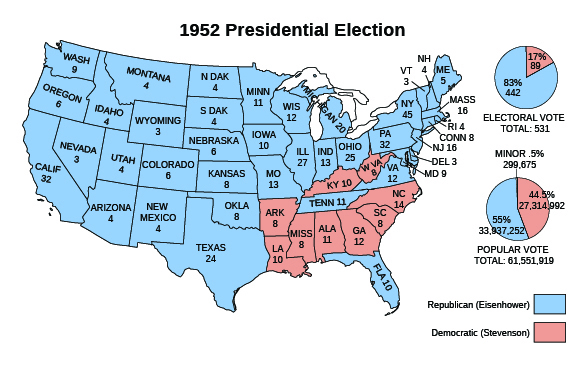| << Chapter < Page | Chapter >> Page > |

In keeping with his goal of a balanced budget, Eisenhower switched the emphasis in defense from larger conventional forces to greater stockpiles of nuclear weapons. His New Look strategy embraced nuclear “ massive retaliation ,” a plan for nuclear response to a first Soviet strike so devastating that the attackers would not be able to respond. Some labeled this approach “ Mutually Assured Destruction ” or MAD.
Part of preparing for a possible war with the Soviet Union was informing the American public what to do in the event of a nuclear attack. The government provided instructions for building and equipping bomb shelters in the basement or backyard, and some cities constructed municipal shelters. Schools purchased dog tags to help identify students in the aftermath of an attack and showed children instructional films telling them what to do if atomic bombs were dropped on the city where they lived.
To prepare its citizens for the possibility of nuclear war, in 1950, the U.S. government published and distributed informative pamphlets such as “A Guide for Surviving Nuclear War” excerpted here.
Just like fire bombs and ordinary high explosives, atomic weapons cause most of their death and damage by blast and heat. So first let’s look at a few things you can do to escape these two dangers.
Even if you have only a second’s warning, there is one important thing you can do to lessen your chances of injury by blast: Fall flat on your face.
More than half of all wounds are the result of being bodily tossed about or being struck by falling and flying objects. If you lie down flat, you are least likely to be thrown about. If you have time to pick a good spot, there is less chance of your being struck by flying glass and other things.
If you are inside a building, the best place to flatten out is close against the cellar wall. If you haven’t time to get down there, lie down along an inside wall, or duck under a bed or table. . . .
If caught out-of-doors, either drop down alongside the base of a good substantial building—avoid flimsy, wooden ones likely to be blown over on top of you—or else jump in any handy ditch or gutter.
When you fall flat to protect yourself from a bombing, don’t look up to see what is coming. Even during the daylight hours, the flash from a bursting A-bomb can cause several moments of blindness, if you’re facing that way. To prevent it, bury your face in your arms and hold it there for 10 to 12 seconds after the explosion. . . .
If you work in the open, always wear full-length, loose-fitting, light-colored clothes in time of emergency. Never go around with your sleeves rolled up. Always wear a hat—the brim could save you a serious face burn.
What do you think was the purpose of these directions? Do you think they could actually help people survive an atomic bomb blast? If not, why publish such booklets?

Notification Switch
Would you like to follow the 'U.s. history' conversation and receive update notifications?